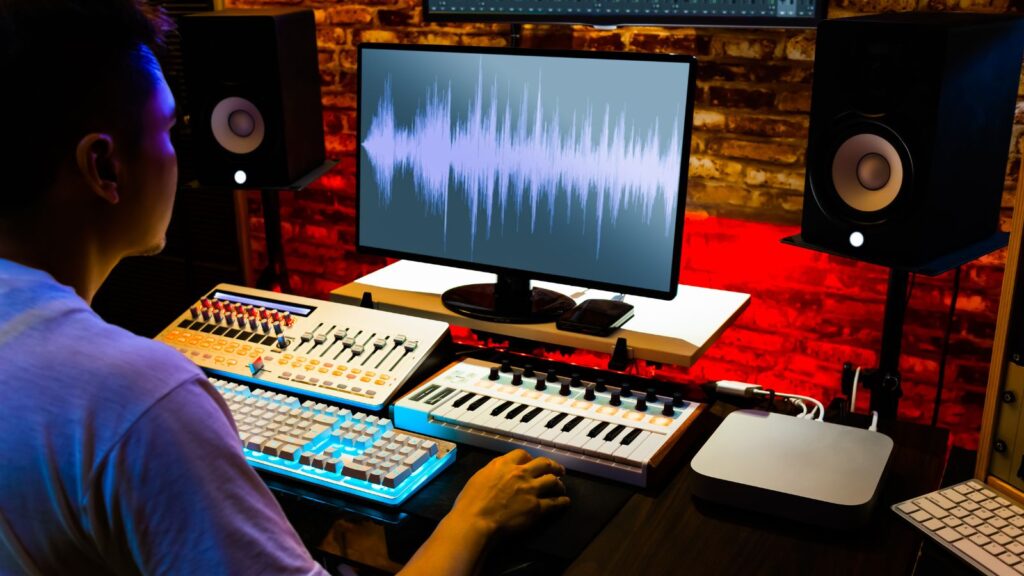Universal Production Music, often the unsung hero of media projects, provides the rhythm and soul to our favourite movies, TV shows, online gaming and commercials. It’s the music that sets the mood, tells a story, and creates emotional connections with the audience.
In the following sections, we’ll delve into the fascinating world of Universal Production Music, exploring its importance, how it’s created, and its impact on the media industry. So, sit back, tune in, and let’s embark on this melodious journey together.
Universal Production Music
Universal Production Music, aptly named, encompasses the music specifically composed for media use other than traditional song structures. This category includes TV, movies, and commercials. It provides a soundtrack to be used as background score, heightening the emotional intensity of scenes or supplementing the production overall.
Focused on the production process, Universal Production Music has unique aspects. Hundreds of music tracks are specifically curated and produced for media use. Often, these soundtracks sit within a library, available for various productions to select based on their requirements, enhancing the narrative and emotive power of the scenes.
Let’s explore the specificities of Universal Production Music production. The primary goal is to evoke a certain mood or emotion, guiding the audience’s emotional response. For instance, in intense scenes, you’ll often hear dramatic music to accentuate the emotion of the characters. Conversely, in comedic scenes, the music is light-hearted, evoking laughter from the audience.
Moreover, a large part of creating Universal Production Music involves understanding the script and the scene’s emotional context. With this information, composers carefully craft immersive soundscapes that seamlessly blend with the visuals and guide the audience’s emotions.

Importance of Universal Production Music in Media Industry
Continuing from the previous discussion, Universal Production Music’s importance in the media industry stems from its indispensable role in creating underlying narratives. Offering layers of depth and emotional resonance, music’s role transcends mere entertainment..
Expressive capabilities of Universal Production Music contribute significantly towards cementing the aesthetic appeal of media products. Music helps determine the style of the film, say, a horror movie or a rom-com. It’s the eerie, suspenseful sounds that amplify a horror film’s fear factor, while light-hearted, uplifting tunes complement the breezy nature of rom-coms..
Moreover, well-crafted musical scores enhance character development. From Darth Vader’s ominous theme in Star Wars to the haunting strains accompanying Hannibal Lecter in the Silence of the Lambs, the music subtly informs about the character’s intentions, supplementing the visual narrative.
In the realm of commercials, Universal Production Music, especially royalty-free tracks, reign supreme. Marketing agencies readily seek these tracks, moulding them according to their promotional narratives. They assign emotional cues to brands, reinforcing product identity and building stronger consumer-brand connections. For instance, Intel’s distinctive four-note jingle, a classic example of brand/sound association, drives immediate recognition and recall.

How to Use Universal Production Music
Incorporating Universal Production Music strategically into media projects dictates mood, highlights narrative arcs, and underlines character emotions. These music pieces, specifically designed for media use, uplift storytelling and create an engaging viewing experience. Here’s a detailed guideline on utilising Universal Production Music effectively.
First, identify the creative needs of the project. Consider factors like genre, narrative mood, character arcs, and audience demographics when selecting a suitable music track. For instance, a suspense thriller might necessitate ominous tones, a romantic comedy can benefit from light-hearted melodies, and an advertising campaign could work well with trendy beats.
Second, tap into music libraries that curate Universal Production Music tracks. These repositories, organised based on genre, mood, instrumentation, and tempo, provide a wide selection catering to various project needs. For example, exploring libraries such as Killer Tracks, Universal Production Music, or FirstCom Music facilitates specific music selection, streamlining the process.
Third, ensure music rights or licences are well-acknowledged and acquired. When using music from such libraries, it’s crucial to acquire the appropriate licences to avoid infringement complications. Entities such as Music Licensing Companies or Performing Rights Organizations help secure these permissions.
Fourth, integrate the chosen music seamlessly into the project. Matching the rhythm and pacing of the scene with the music track key, editing appropriately for transitions; these steps keep audience engagement high. For example, an intense fight scene ideally pairs with faster tempo music.

